 Sport
Sport  Sport
Sport  Animals
Animals 10 Strange Times When Species Evolved Backward
 Facts
Facts Ten Unexpectedly Fascinating Facts About Rain
 Crime
Crime 10 Dark Details of Australia’s Gruesome Unsolved Wanda Murders
 Humans
Humans 10 Unsung Figures Behind Some of History’s Most Famous Journeys
 Animals
Animals 10 Species That Refused to Go Extinct
 Weird Stuff
Weird Stuff 10 Weird Things People Used to Do at New Year’s
 Our World
Our World 10 Archaeological Discoveries of 2025 That Refined History
 Weird Stuff
Weird Stuff 10 Fascinating Facts You Might Not Know About Snow
 Miscellaneous
Miscellaneous Top 10 Things Crypto Was Supposed to Change & What Actually Did
 Sport
Sport The 10 Least Credible Superstars in Professional Sports
 Animals
Animals 10 Strange Times When Species Evolved Backward
 Facts
Facts Ten Unexpectedly Fascinating Facts About Rain
Who's Behind Listverse?

Jamie Frater
Head Editor
Jamie founded Listverse due to an insatiable desire to share fascinating, obscure, and bizarre facts. He has been a guest speaker on numerous national radio and television stations and is a five time published author.
More About Us Crime
Crime 10 Dark Details of Australia’s Gruesome Unsolved Wanda Murders
 Humans
Humans 10 Unsung Figures Behind Some of History’s Most Famous Journeys
 Animals
Animals 10 Species That Refused to Go Extinct
 Weird Stuff
Weird Stuff 10 Weird Things People Used to Do at New Year’s
 Our World
Our World 10 Archaeological Discoveries of 2025 That Refined History
 Weird Stuff
Weird Stuff 10 Fascinating Facts You Might Not Know About Snow
 Miscellaneous
Miscellaneous Top 10 Things Crypto Was Supposed to Change & What Actually Did
10 Key Tech Advances We Need To Colonize Mars
Technology advances by leaps and bounds, and it had better keep doing that if we’re going to send people to live on Mars within the next few decades. In fact, NASA plans to send their first manned mission to Mars as early as the 2030s. But there are a few key pieces of technology humanity will have to improve on before we can hope to reach the red planet safely.
10Water Extractors
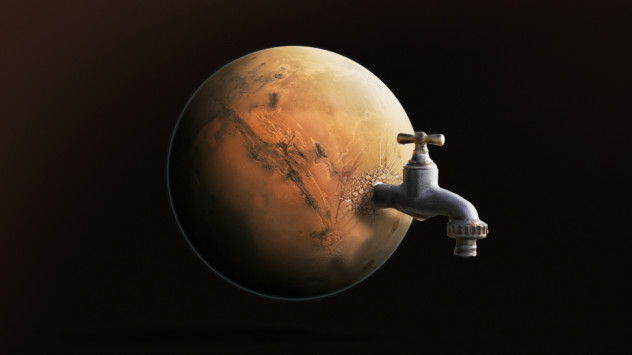
Despite the recent discovery of some liquid water on Mars, future colonizers are going to be dependent on frozen water trapped in the Martian soil. Extracting that water might involve physically digging it up, or it might mean using microwaves to vaporize the water and bring it to the surface as a gas. Unfortunately, while machines to do both have been tested on Earth, no large-scale water extractors have yet been tested on Mars itself.
And it’s definitely important to make sure that machinery works before we consider establishing a permanent base on Mars. That’s not just so that the colonizers don’t die of dehydration. Some experts have suggested using the water to supply oxygen by separating the hydrogen and oxygen atoms that make up water molecules. If that plan is used and the water-gathering machinery breaks down, the colonizers would be in danger of dying from lack of oxygen. But even if an alternate system of supplying oxygen is used (such as breaking down carbon dioxide from the Martian atmosphere) water would be needed for making fuel as well as drinking. Such vital equipment should be tested in the environment of Mars, allowing flaws to be identified before people’s lives rely on it.
9Mars Suits
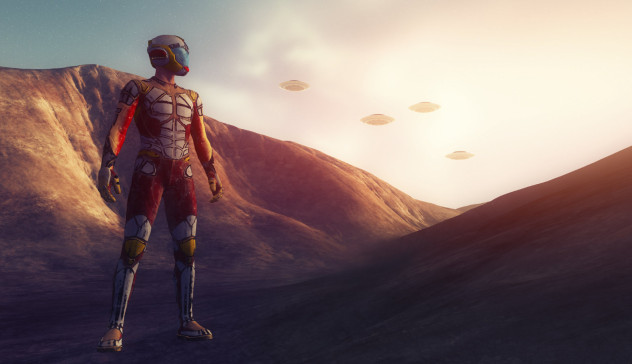
The environment of Mars presents some interesting challenges, with plenty of dangers that might not kill the colonizers right away, but could cause severe health problems down the road. As such, exploring Mars would require special suits even more advanced than current spacesuits.
For starters, Mars is frequently bathed in deadly space radiation. On Earth, we’re protected from these cosmic rays by the atmosphere and a magnetic field known as the magnetosphere. Orbiting spacecraft like the International Space Station (ISS) are inside the magnetosphere, so only a few astronauts have risked full exposure to space radiation on brief missions beyond low-Earth orbit. A trip to Mars would take much longer, making radiation shielding vital.
That’s particularly tricky for Mars suits, which have to be light enough to wear while also providing adequate protection. One candidate might be hydrogenated boron nitride nanotubes (BNNTs). Originally developed to shield spacecraft, researchers have actually made BNNTs into yarn, which could be mixed with the fabric of spacesuits to provide protection from radiation.
Another problem is that the human body tends to break down without the pressure of Earth’s gravity. Astronauts on the ISS suffer from muscle atrophy and can lose up to 2 percent of their bone mass per month. On the ISS this is manageable through exercise, but for long-term missions to Mars, researchers at MIT have developed the Gravity Loading Countermeasure Skinsuit, which mimics the effects of Earth’s gravity by gently squeezing the body. The suit is skintight, allowing it to be worn under larger spacesuits while outside a spacecraft or on the surface of Mars.
8Spaceships
It goes without saying that putting a person on Mars will be significantly more challenging than landing an unmanned rover like Curiosity. So far, we’ve only managed a handful of brief manned missions to the Moon, which is around 200 times closer to the Earth than Mars is.
But NASA is dreaming big with the Orion space capsule. Designed with a mission to Mars in mind, Orion will hopefully be capable of long-term space travel, carrying up to four astronauts on a six- to nine-month journey to Mars.
However, Orion’s mission to Mars won’t happen until at least the 2030s. First, NASA plans to test it with missions to the Moon and at least one asteroid. The agency is also developing a huge new rocket called the Space Launch System to propel Orion. The first manned tests are tentatively scheduled for 2021, although it now seems likely they will be delayed until 2023 at least.
In the meantime, Orion made its first unmanned flight in December 2014. The mission was designed to test the capsule and gather information on the effects of radiation. At the moment, radiation from galactic cosmic rays would prevent humans from spending longer than 150 days outside low-Earth orbit. A mission to Mars and back would take a lot longer than that, so developing effective radiation shields for Orion will be key.
7Fuel
At the moment, Orion is a relatively small spacecraft, but keeping astronauts alive and sane on the months-long journey to Mars will require the addition of a much larger “habitat module.” Propelling such a large spacecraft all the way to Mars would require a huge amount of fuel. That fuel would itself add to the weight of the shuttle, limiting room for instruments and requiring even more effort to get out of the Earth’s atmosphere.
One solution would be to find a more efficient type of fuel. At the moment, most spacecraft are powered by a chemical propulsion system. However, NASA is working on a type of propulsion system known as solar electric propulsion (SEP). This harnesses energy from the Sun and uses it to accelerate xenon atoms into an exhaust plume that propels the spacecraft forward. This system would be far lighter than any chemical propulsion engine.
However, there is a problem. At the moment, solar arrays just can’t harvest enough power for SEP engines to provide the same thrust as chemical engines, meaning that an SEP-powered craft would take longer to reach Mars. This is a major problem for a manned mission, since we’re already struggling to keep the astronauts alive and sane for the minimum six months it would take to reach Mars.
As a result, some experts have suggested that fuel-efficient SEP engines should be used to transport supplies and equipment to Mars. Once the heavy supplies have safely landed, the astronauts could make a faster trip on a stripped-down, chemically propelled spacecraft designed to just get them there safely and quickly.
6Landing Equipment
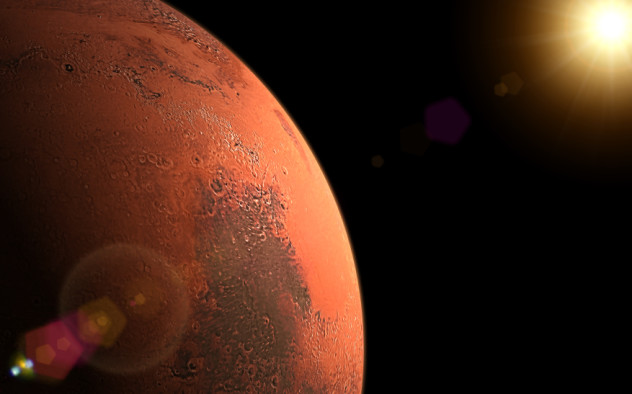
Even if we had a ship that could carry humans and supplies to Mars, there’s still an intractable problem: We just don’t have the technology to land it safely. We can land spacecraft on the Moon, where there’s essentially no atmosphere. And we can easily land on Earth, which has a much thicker atmosphere than Mars. But the red planet’s thin atmosphere presents unique challenges that make landing even light robotic probes a huge struggle. There is presently no method to safely land a ship large enough to carry humans.
NASA is hard at work on the problem and is currently testing a combination of a huge supersonic parachute and a doughnut-shaped air brake. A test in 2015 was not a success, with the parachute being ripped apart after failing to inflate. However, the test provided valuable data, which NASA plans to use to improve the design. Since NASA’s mission to Mars is tentatively planned for the 2030s, they have plenty of time to work on the problem.
Meanwhile, the controversial Mars One project, which hopes to establish a private colony on Mars, plans to use a spacecraft that slows itself using rockets and without a parachute. This has never been done before, and experts have described the Mars One project in general as “insane.”
5Green Thumbs

In the recent movie adaptation of The Martian, Matt Damon’s character Mark Watney is portrayed as a genius botanist, able to grow potatoes in the red soil of Mars. In real life, Watney’s nearest equivalent is Bruce Bugbee, the Utah State University scientist behind the lettuce NASA recently grew on the ISS. According to Bugbee, The Martian‘s basic concepts were correct, but the movie underestimated the difficulty of growing plants on Mars.
For starters, Mars only gets 60 percent of the Earth’s sunlight. And Watney’s radiation-shielded habitat would have blocked out even more of the light. In real life, Bugbee says, a farm on Mars would need an artificial light source or a system of mirrors and fiber optics to concentrate the sunlight Mars does get.
Bugbee also says it would be extremely difficult to grow plants in the Martian soil. Appropriately, the red planet is actually quite rusty, insofar as the soil is full of iron oxides. This oxidized soil is not ideal for plant life, so Martian colonizers would need to grow their crops in a system of hydroponics, or else treat the soil to remove the iron oxides and increase fertility.
But thanks to the work of Bugbee and others, future Martians should be equipped with everything they need to grow edible plants on the journey to Mars and on the planet itself. Just a few months ago, astronaut Scott Kelly became the first person to taste lettuce grown in space. Apparently, it was delicious.
4Builder-Bots
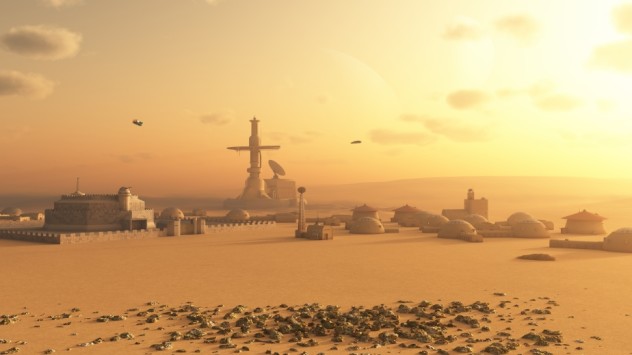
We can’t just dump people on Mars with no infrastructure in place and expect them to build everything they need themselves. All realistic colonization plans envision first sending unmanned ships loaded with supplies, along with robots to do the prep work before humans can arrive. For example, robots could construct livable habitats and begin extracting water from the soil long before the first human sets foot on the red Martian soil. The problem is that we haven’t yet built these builder bots, and the robots that we can currently build are fairly limited in what they can achieve on Mars.
At present, NASA is working in conjunction with two universities on a humanoid robot dubbed the R5. However, some have questioned whether a bipedal robot is the best way to go, arguing that four legs or preferably tire treads would be sturdier. Robot skeptics have also argued against putting too much pressure on our mechanical workers. Instead, they argue that we should simply do as much of the work as possible on Earth. For example, prebuilt inflatable shelters could be set up, saving us the trouble of creating a robot to construct the shelter from raw materials. That would leave the bots free to focus on simple tasks that wouldn’t need problem-solving skills or fine motor control.
3Homes
Clearly, a key step to colonizing Mars will be designing specialized habitats for the colonists. These habitats will need to be pressurized to near-Earth levels. They will also need to protect against dust storms, radiation, and frigid weather conditions. And they’ll need to be homey, since future Martian colonists are probably going to be spending a lot of time indoors.
And life on Mars would pose even more unexpected challenges. For example, it seems intuitive that Martian colonists would grow edible plants in their habitats. The problem is that plants produce oxygen, which would build up in a sealed environment until the air became toxic to humans or everything burst into flames. And it’s difficult to vent excess oxygen without also losing precious nitrogen, a vital atmosphere component. So before any space farms are possible, engineers will have to develop a robust system for removing excess oxygen under Martian conditions.
Ultimately, it’s too early to say what a house on Mars might look like. But some of the possibilities are breathtaking. In 2015, NASA held a competition to design a Martian habitat. The winning entry was one of the few to ignore the planet’s red soil. Instead, the designers used an equally plentiful resource, proposing a towering triangular structure built entirely out of Martian ice.
2Maternity Wards
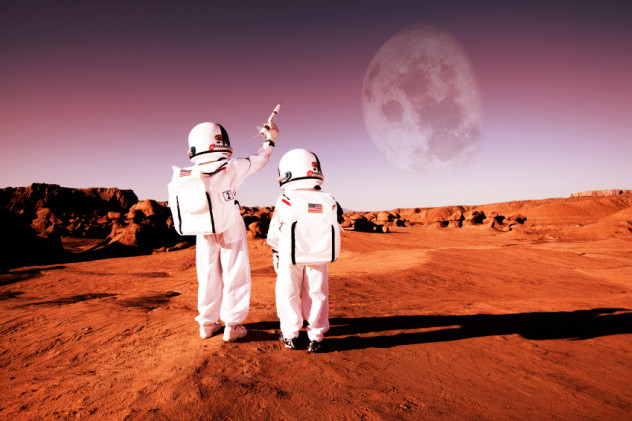
Generally, astronauts are forbidden from having sexual relations while on a mission. But if you’re sending groups of people to Mars for the rest of their lives, it’s hard to imagine them all staying permanently celibate. And with sex on Mars comes the possibility of pregnancy on Mars. That’s completely uncharted territory and it’s likely that special precautions would have to be taken to ensure the safety of the mother and child.
The big problem, as usual, is radiation. The DNA that controls embryo development is extremely susceptible to radiation damage. As a result, a child conceived on the journey to Mars would almost certainly be sterile and would run a high risk of mental retardation or birth defects. On Mars itself, the situation would be more manageable, but extra precautions would certainly have to be taken to shield expectant mothers from radiation. It has even been suggested that colonists should establish a habitat in a crater on the Martian moon Phobos, where some crater walls block 90 percent of cosmic radiation.
It’s also clear that a child raised on Mars might develop in different ways from one raised on Earth. In one of the few experiments on the subject, pregnant rats were sent into space and then returned to Earth to give birth. The new baby rats didn’t have a proper sense of up and down due to their development in zero gravity. But the effect vanished after a few days, showing that space babies can adjust themselves to normal gravity.
With all that said, space pregnancy might not be such a pressing issue after all. Researcher Joe Tash has suggested that lengthy periods spent in low gravity could badly damage both male and female reproductive systems. If this is the case, a lengthy trip to Mars would render the first Martians “reproductively compromised.”
1A Way Home

The Mars One project proposes to send colonists on a one-way trip to Mars, with no plans for a return to Earth. Which is probably for the best, since a report from MIT predicts that the Mars One colonists will die almost immediately. And while buying a one-way ticket to Mars might sound romantic, trapping people in space probably isn’t the best way to go about colonizing the solar system.
Fortunately, NASA does plan for its Mars mission to include a return trip. Of course, this presents a huge technical challenge. Unexpectedly, the journey back to Earth is the comparatively easy part—a spaceship called the Earth Return Vehicle will stay in orbit around Mars until it’s time to transport the astronauts home. The difficulty is getting the astronauts to the Earth Return Vehicle. Pushing through the Martian atmosphere and into orbit requires a huge amount of propellant, which would take years to produce.
NASA’s solution is a spaceship known as the Mars Ascent Vehicle (MAV), which will be sent to Mars years before the astronauts. Once it lands, the MAV will automatically begin extracting carbon dioxide from the atmosphere and converting it into fuel. It’ll probably take about two years for the MAV to fill its fuel tanks, and the astronauts won’t leave Earth until NASA receives confirmation that enough fuel has been produced to get them home again. As a result, the MAV needs to be tough enough to survive the inhospitable Martian landscape for up to four years. NASA expects it to be the heaviest object they will need to land on Mars for the mission to be a success. But it’ll be worth it to make sure the first Martians have a way home.
Veronica is the author of “First Grave On Mars,” a sci-fi novella and first in a series about colonizing Mars. She also has a humor blog: themelesswriting.com.








